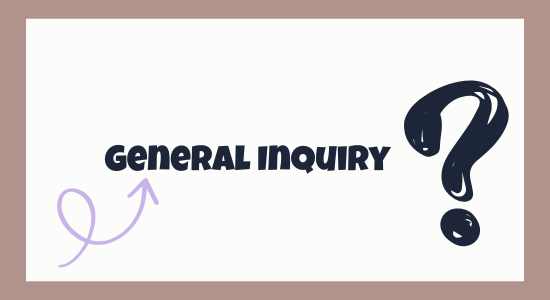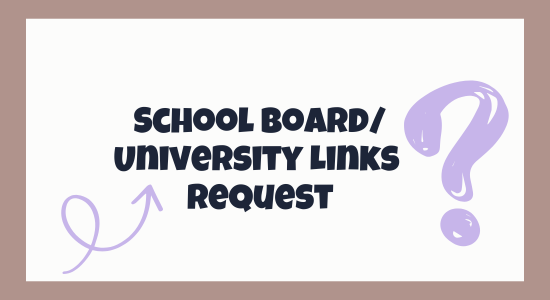
I Don’t Get Nuclear Energy!
You’re sitting in class, your teacher throws around terms like “fission,” “uranium-235,” “half-life,” and your brain starts buffering like a bad Wi-Fi connection. You try to keep up, but everything feels too abstract. Maybe you even Googled “how nuclear power works” and ended up drowning in technical jargon and diagrams that look more like spacecraft blueprints.
You’re not alone. Many students struggle to understand nuclear energy—not because they’re not smart, but because the concept combines physics, chemistry, engineering, and environmental science all in one. It’s a lot.
But here’s the thing: nuclear energy is not just a chapter in your textbook—it’s a major real-world issue. Energy policy, climate change, power shortages, and even international relations revolve around it. So if you don’t truly grasp how nuclear energy works and what it means, you’re not just missing test points—you’re missing the bigger picture.
Why Misunderstanding Nuclear Energy Can Hurt You
Let’s be honest—many students think nuclear energy is either “the thing that caused Chernobyl” or “something about bombs.” And yes, both are related, but neither tells the full story.
Here’s why that’s a problem:
1. Inaccurate Views = Poor Decisions
If you don’t understand the difference between nuclear fission and nuclear fusion, or confuse radiation with nuclear waste, you’re likely to form opinions (and even vote) based on fear instead of facts.
2. Exam Traps
Science questions involving nuclear reactions can trip you up if you don't understand basic concepts like chain reactions or isotope stability. It’s not just physics—these topics appear in chemistry and environmental science exams too.
3. Career Disconnect
Energy is one of the fastest-growing sectors. If you’re aiming for a career in sustainability, engineering, public policy, or tech, understanding nuclear energy is a must-have. Misconceptions could close doors before you even knock.
So instead of letting nuclear energy remain a foggy topic, let’s clear things up. Let’s break it down simply, logically, and step by step.
Nuclear Energy Demystified – Step by Step
We’ll walk through:
- What nuclear energy is
- How it works (with fission explained simply)
- The benefits and real-world advantages
- The risks and downsides
- Case studies to tie it all together
Let’s get started.
1. What Is Nuclear Energy?
Nuclear energy is the energy released from the nucleus (the center) of an atom. Unlike chemical reactions, which involve electrons orbiting the nucleus, nuclear energy taps into the actual core of the atom. That means way more energy.
There are two main processes:
- Nuclear Fission – Splitting heavy atoms (used in nuclear power plants)
- Nuclear Fusion – Fusing light atoms (used in the sun and experimental reactors)
Right now, almost all our nuclear power comes from fission, so we’ll focus on that.
2. How Nuclear Fission Works (Without Complicating It)
Imagine an atom as a tiny solar system. At the center is the nucleus, packed with protons and neutrons. Some atoms—like Uranium-235—are unstable and can be split.
Here’s a simplified step-by-step of fission:
- Neutron hits Uranium-235 nucleus
- Nucleus splits into two smaller atoms (like Krypton and Barium)
- This releases:
- More neutrons (that can hit other U-235 atoms)
- A huge amount of energy (as heat)
That’s called a chain reaction. And if it’s controlled, it powers a nuclear reactor. If it’s uncontrolled, it causes an explosion—like in a bomb.
Where does all that energy go?
The heat released from fission is used to boil water, which produces steam, which spins a turbine, which powers a generator to make electricity. That’s it. It’s not magic—it’s boiling water using nuclear fuel instead of coal or gas.
3. Benefits of Nuclear Energy
Now that you know how it works, let’s talk about why we use it.
✅ High Energy Density
1 kg of uranium-235 produces ~24,000,000 kWh of energy. That’s about 3 million times more than 1 kg of coal.
✅ Low Greenhouse Gas Emissions
Nuclear plants don’t emit CO₂ during operation. That makes them key players in the fight against climate change. France, for example, gets ~70% of its electricity from nuclear energy and has one of the lowest per capita CO₂ emissions in Europe.
✅ Reliability
Unlike solar or wind, nuclear doesn’t depend on weather. It provides base-load power—consistent energy day and night.
✅ Long-Term Supply
There’s enough uranium and thorium on Earth to last hundreds of years, and with technologies like breeder reactors or fusion (once feasible), the potential is even greater.
4. Risks and Downsides
Okay, so why doesn’t every country go all-in on nuclear?
⚠️ Nuclear Accidents
Things can go horribly wrong when they do. Let’s look at two examples:
- Chernobyl (1986) – A reactor exploded due to design flaws and human error. Radiation spread over Europe. Long-term health effects still debated.
- Fukushima (2011) – A tsunami disabled cooling systems. Partial meltdown occurred. Led to increased scrutiny and plant shutdowns globally.
While modern reactors are safer, the risk of human or natural disaster is never zero.
⚠️ Radioactive Waste
Spent fuel remains dangerous for thousands of years. Safe storage is an ongoing issue. Right now, most countries store waste on-site at plants. Long-term geological repositories (like Finland’s Onkalo facility) are being developed, but it’s a slow process.
⚠️ High Costs
Building a nuclear plant costs billions and takes 10+ years. Decommissioning (shutting down safely) also costs a lot. Private investors often shy away without government support.
⚠️ Weapons Proliferation
The same technology used in civilian nuclear power can potentially be used to make weapons. That’s why international monitoring (like by the IAEA) is strict.
5. Case Studies and Real-World Data
Let’s look at three real examples to tie this all together.
🇫🇷 France: Nuclear Success
• ~70% of electricity from nuclear
• 56 reactors across the country
• Low CO₂ emissions
• High public support (until Fukushima)
Lesson: With strong infrastructure and regulation, nuclear can work at scale.
🇩🇪 Germany: Nuclear Exit
- Decided to phase out nuclear post-Fukushima
- Increased reliance on coal and gas temporarily
- Plans to fully shift to renewables
Lesson: Political decisions can reverse progress, sometimes with climate trade-offs.
🇯🇵 Japan: Post-Fukushima Struggle
- Shut down most reactors after 2011
- Electricity prices rose
- Carbon emissions increased
- Slowly restarting reactors with upgraded safety
Lesson: Public fear and safety concerns can derail energy systems—even if nuclear is technically sound.
Nuclear vs Other Energy Sources (Quick Table)
| Source | CO₂ Emissions | Reliability | Cost (long-term) | Waste Issue? | Renewable? |
| Nuclear | Low | High | Moderate-High | Yes | No |
| Coal | High | High | Moderate | Yes (ash) | No |
| Solar | None | Low (daytime) | Moderate | Minimal | Yes |
| Wind | None | Medium (wind-dependent) | Moderate | Minimal | Yes |
| Natural Gas | Medium | High | Low | Some (CO₂) | No |
| Hydropower | None | High | Low | Minimal | Yes |
So… Should the World Use Nuclear Energy?
There’s no simple yes or no.
Nuclear energy is powerful, efficient, and clean—but also risky, expensive, and politically sensitive. It’s not a silver bullet, but it can be a key part of the solution, especially when combined with renewables.
Some countries (like France and China) see it as essential. Others (like Germany) are walking away. The future depends on innovation, public opinion, and policy.
Here’s your cheat sheet:
1. Nuclear fission = splitting atoms (usually uranium-235) to release energy.
2. That energy heats water → steam → turbine → electricity.
3. Benefits: Low emissions, high energy output, consistent supply.
4. Risks: Accidents, radioactive waste, high costs.
5. Real-world impact: Countries choose based on politics, safety, and energy needs.
Here’s how to make sure this topic sticks:
1. Sketch a diagram of a nuclear power plant. Label where fission happens, where steam is made, and where electricity is generated
2. Explain nuclear fission to a friend using the chain reaction example. If they get it, you’ve nailed it.
3. Compare nuclear to another energy source (e.g., wind or coal). Pick your side and list pros and cons.
4. Watch a documentary like “Pandora’s Promise” or “The Atom: A Love Affair” for real-world context.
Next time someone says “nuclear energy is dangerous” or “it’s the answer to climate change,” you’ll know how to respond—with real facts, clear logic, and a balanced view.
0 Comments
-
Comments will be injected here via JS












Post a Comment